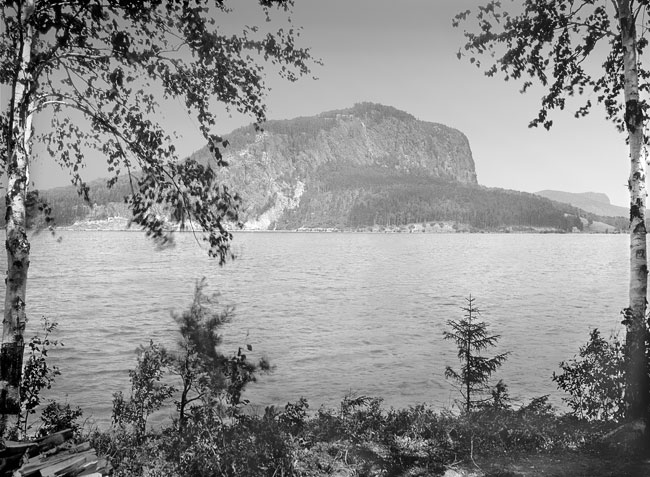Mount Kineo from Rockwood
- 1924
- Digital pigment print from original Bert Call negative
- Print Size 22 X 30 in / 55.9 x 76.2 cm
- Frame Size 30 X 37 in / 76.2 x 94.0 cm

“Hornstone, which will answer for flints, occurs in various parts of the State, where trap-rocks have acted upon silicious slate. The largest mass of the stone known in the world is Mount Kineo, upon Moosehead Lake, which appears to be entirely composed of it, and rises seven hundred feet above the lake level.”
“Getting up some time after midnight to collect the scattered brands together, while my companions were sound asleep, I observed, partly in the fire, which had ceased to blaze, a perfectly regular elliptical ring of light, about five inches in its shortest diameter, six or seven in its longer, and from one eighth to one quarter of an inch wide. I could tell it from the fire only by its whiteness. I saw at once that it must be phosphorescent wood, which I had so often heard of, but never chanced to see. Putting my finger on it, with a little hesitation, I found that it was a piece of dead moose-wood (Acer striatum) which the Indian had cut off in a slanting direction the evening before.”
“I was exceedingly interested by this phenomenon, and already felt paid for my journey. It could hardly have thrilled me more if it had taken the form of letters, or of the human face. If I had met with this ring of light while groping in this forest alone, away from any fire, I should have been still more surprised. I little thought that there was such a light shining in the darkness of the wilderness for me.”
—Henry David Thoreau, “1857 Allegash and East Branch”, The Maine Woods